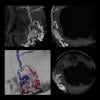William Pinsky, M.D., a pediatric cardiologist and CEO of the Educational Commission for Foreign Medical Graduates (ECFMG), and Mandeep Mehra, M.D., medical director of the Brigham and Women’s Hospital (BWH) Heart and Vascular Center and professor of medicine at Harvard Medical School, explain the U.S. doctor shortage and how foreign doctors help fill the gap.
According to 2017 data provided by the Association of American Medical Colleges (AAMC), 40 percent of interventional cardiologists, 30 percent of cardiovascular disease specialists, and 26 percent of pediatric cardiologists in the United States are international medical graduates (IMGs). However, as the physician shortage continues to impact primary care doctors, psychiatrists, OB/GYNs, among others, the U.S. also expects to see a shortage of cardiologists within the next 10 years, according to a spotlight cardiology study issued by the professional services firm PYA, which specialized in healthcare consulting.
The interview was shot at the American College of Cardiology (ACC) 2019 meeting.








































